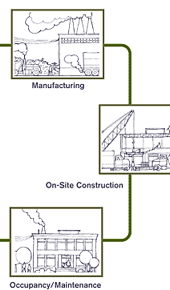Improved life-cycle costs
The green payoff
Construction costs represent less than 20 percent of the total costs of a building. Operating costs comprise the majority of the overall life-cycle costs. When you build green, you significantly reduce operating costs for a small upfront premium. A green project delivers a more durable building, and it can even save you money during construction.
The numbers: $$$
First cost savings (A link to the Lower Construction Costs page)
Reduced operating costs
Enhanced durability
Renovation and rehab decisions
The numbers: A potential 10-fold return on investment
The Costs and Benefits of Green Affordable Housing, a 2005 survey of green affordable housing projects across the U.S. made it clear: over the life of a building, green affordable housing is more cost effective than conventional alternatives (net present value estimate for a 30-year life).
For the 11 multifamily developments analyzed (6 new, 4 rehab, 1 mixed):
- The initial cost premium for green was only 2.3 percent, or $2.39 per square foot. (Averages percentages of total development costs and of design and construction costs, respectively.)
- The same projects averaged over $1 million in savings -- and even more when government and utility rebates are included.
- The green investment paid off for every project. New construction averaged much higher savings than rehab/renovation-- $2.1 million versus $88,000.
- Utility bills for green developments were more than 45 percent lower on average when compared with traditional buildings. In several green developments, these savings are on track to more than pay for the additional costs of greening design and construction.
- Durable materials saved even more, and would yield a greater payback beyond the 30-year period used for the analysis.
Several more studies have shown even higher returns from affordable green building in the form of increased resident comfort and health and decreased environmental impact. A 2003 analysis, The Costs and Financial Benefits of Green Buildings, showed that the health and productivity benefits of LEED Certified and Silver buildings are worth over 18 percent of total design and construction costs. When combined with the operations savings, these projects realized a ten-fold return on green investment. (California Sustainable Building Task Force, 2003)
Breaking it down: Reduced operating costs
Operating costs can add up to more than 80 percent of a building's life-cycle costs. Green buildings keep those expenses in check with efficient, high-performance design and durability.
- Energy and water efficiency rack up savings for residents and building owners. Usage is typically 30 percent less than in conventional buildings, and savings are often greater for energy for lighting and water for sprinklers systems.
- Maintenance savings can be significant, too. More durable materials and a building designed to last reap dividends over time. Commissioning agents teach operations staff how to care for the building and can save even more in maintenance, systems efficiency, and replacement costs. Moreover, residents who are both comfortable in and appreciative of their houses will take better care of them.
- Consistent rental income is yet another benefit of building green. The marketability of green homes means that units rent or sell faster, reducing their carrying costs. Lower utility bills (and reduced medical expenses due to better indoor air quality) ensure that residents can pay rent on time.
- Reduced employee turnover might seem like an unlikely result of green building, but studies of several building types strongly suggest that a healthy working environment, not to mention a sense of pride in operating a high performance building, can significantly improve employee retention. Employee training costs are significant enough that higher retention rates translate this into considerable savings.
- Insurance companies are beginning to understand how durability and indoor air quality reduce the risk and liability of a green building, especially in terms of preventing mold. As a result, green affordable housing owners may be able to secure lower premiums.
- Reduced costs of compliance with new regulations are hard to quantify, but can deliver sizeable savings. As Washington, DC and surrounding municipalities consider new stormwater charges, for example, buildings built with more pervious surface area will likely pay much lower fees. Scrambling to comply with a law is almost always more expensive than learning to meet high standards in advance.
- All of these savings add up to higher net operating income and thus increased property value. Appraisers are starting to warm up to the idea that a building's market value should be tied to its operating income.
Built green to last: Enhanced durability means lower replacement costs
Replacing a building's roof, flooring, HVAC system, or the whole building itself results in the highest cost to the environment and to your own bottom line. Building green incorporates durable materials and design that prolongs the life of building systems and the building itself. While many of these features also reduce operating costs, your commitment to proactive maintenance is the key to keeping systems working well into their golden years.
- Moisture control is the biggest benefit of durable design and construction. With building science principles in hand, you can keep water out through proper sealing, protective eaves and overhangs, and building envelope and systems designed to limit condensation. Mold problems will disappear. (See the Waste page for details.)
- Shade can significantly increase the life of paint, shingles, and pavement. Repaving costs for a shade-covered street are less than half that for a sunny one.
- A green roof offers even more protection by stabilizing the temperature of the roof membrane. A city rooftop will often hit 175°F in summer, whereas green roofs rarely top 85°F.
- When you prioritize energy efficient systems and health, you almost always select higher quality, more durable products. For example, durable tile flooring improves indoor air quality. (See the Materials and Waste pages for more on specific durable building products and practices.)
- A commitment to calibrating systems to work best alone and then together keeps a green building operating properly and optimizes building health in the long run.
Renovation and rehab: Opportunities to save
A green, life-cycle costing approach might be most valuable for rehab and renovation projects. The majority of affordable housing in the National Capital Region was constructed years ago. It leaks energy, needs maintenance, and was not built as healthy housing. The opportunities to improve performance and reduce operating costs through renovation are substantial.
By prioritizing energy efficiency and indoor air quality, you ensure that weatherization and maintenance projects will not fall through the cracks. Investments in these small improvements will pay off in durability and utility bill savings. Sealing leaks can significantly reduce heating and cooling loads.
When building systems need to be overhauled or replaced, life-cycle analysis can show you which choices will optimize the whole building's performance. For example, if the HVAC system needs to be replaced, it is important to evaluate the building envelope. Replacing older windows may let you install a smaller, high-efficiency HVAC system that saves more money upfront and down the line.

See the full building life-cycle diagram at the Whole Building Design Guide.
Links
A Builder's Guide to Marketable, Affordable and Durable Entry-level Homes
Costs and savings of energy efficiency improvements for PATH upgrades
PATH's Affordable Green Save Later page
Durability By Design: A Guide for Residential Builders and Designers , PATH
The Top Five Do-it-Now: Quality and Durability , PATH
Durability Doctor tool webpage , PATH
PATH Tech Set 2: Durable Building Envelope

